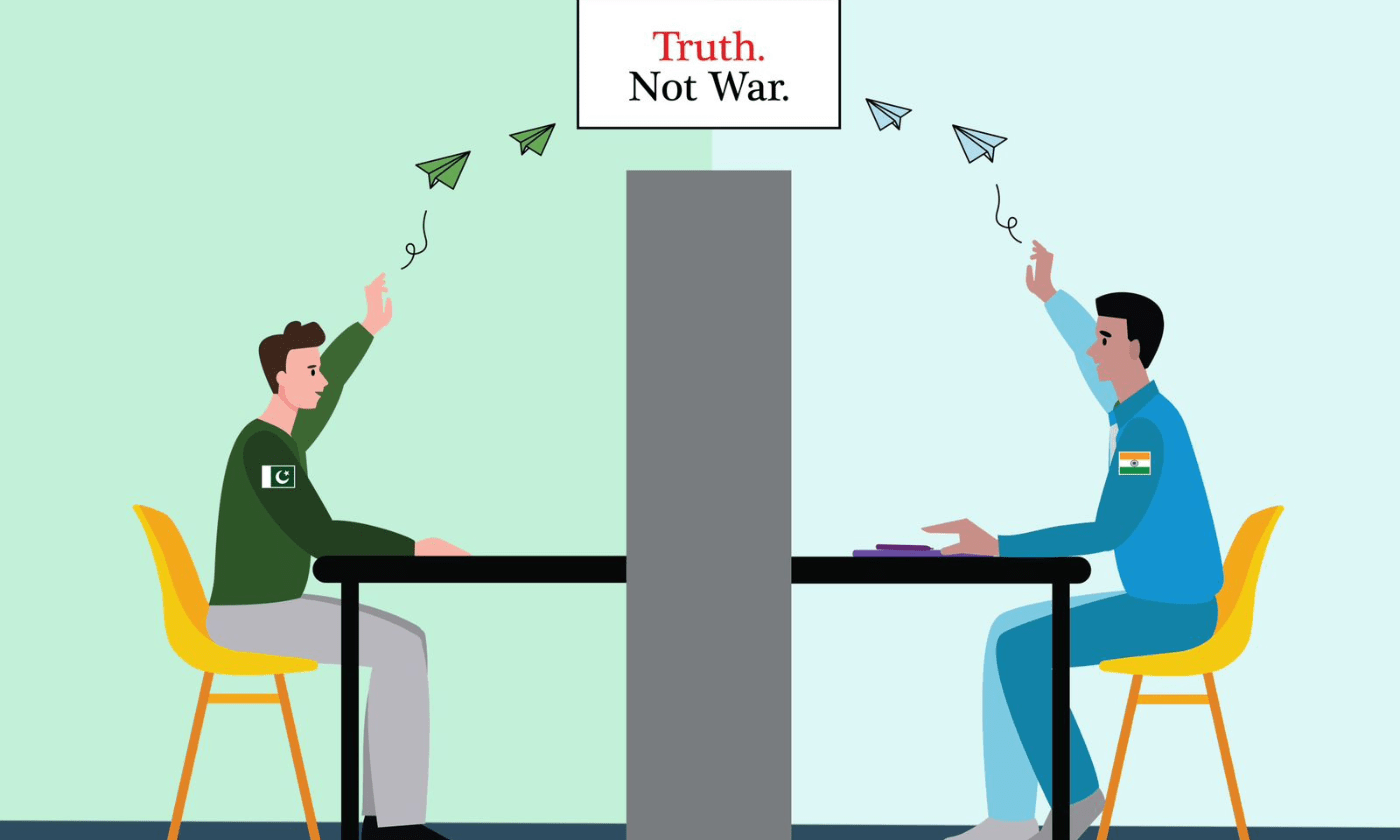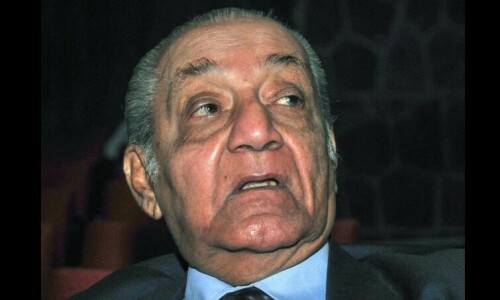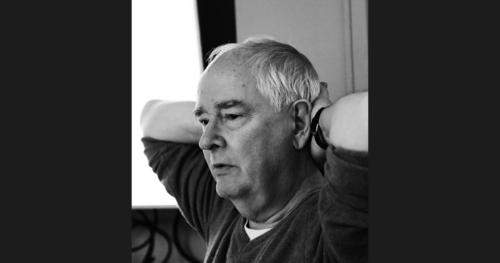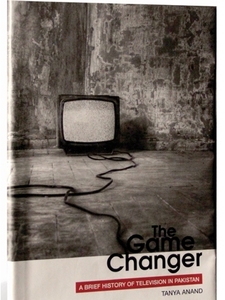Collaboration Yes. Confrontation No.
The attack in Pahalgam in April shook the region and sparked a brief war situation between Pakistan and India. As tensions escalated on the military front, the media coverage by the Pakistani and Indian news outlets triggered a digital upheaval of disinformation, jingoism and Bollywood-esque war-mongering.
To keep any such future conflicts from further escalation, journalists on both sides of the border need to focus on getting their facts straight, report with a collaborative mindset and see the region as one connected community rather than just two nuclear-armed countries stuck in a historical conflict.
In the age of social media connectivity, collaboration is not impossible to achieve, unlike previous wars when people relied only on information provided by the state, such as updates from Radio Pakistan and broadcasts of milli naghmas. As Dr Maira Qaddos argues in A Colossal Irony: Exploring The Role Of Media During “Fall Of Dhaka 1971”, the media then “did not show the real picture of the issue, and instead kept on highlighting the negativities and atrocities that gave air to the conflict.”
This time, as border skirmishes increased and war-related memes went viral on social media, there was more interaction and back and forth between Indian and Pakistani netizens than there ever had been during an India vs Pakistan cricket match. So, reaching out to journalists to collaborate across borders on sane, nuanced reporting is not a huge ask.
According to Ramsha Jahangir – a Pakistani journalist and policy expert specialising in mis/disinformation, internet rights, censorship and digital society – the need is to create supportive networks that collaborate across borders in safe and meaningful ways. This support can come from international news outlets by encouraging collaborative stories without co-opting them. “It’s not just about stopping mis/disinformation; it is about re-humanising the ‘other side,’” says Jahangir. “Collaborative journalism across the India Pakistan border will not solve the conflict overnight, but it can crack the door open to better understanding and de escalation.” However, when there are conflicting narratives at a national level as well, even the most passionate collaborative projects can waver when it comes to agreeing on framing the tone of a story, and in this respect, Jahangir emphasises the importance of non-political spaces for journalists to share experiences and build trust. “It starts by redefining what a ‘patriotic journalist’ looks like. Not as someone who echoes war cries, but as someone who asks harder questions.”
While the Indian media resorted to loud, sensationalist reporting of fake news regarding what was happening on the ground, the Pakistani media resorted to tongue-in-cheek reactions to that reporting. The few media outlets in India that focused on nuanced, verified reporting, such as The Wire, were censored by the Indian government. According to the Committee to Protect Journalists, “Internet Service Providers told The Wire that they had received orders to block the site under a government directive issued under the Information Technology Act, 2000.”
Archis Chowdhury, senior correspondent and fact-checker at BOOM India, says that Indian journalists were not been exposed to Pakistani media coverage ever since it was banned during the conflict. He adds, “When people watch Bollywood movies in India, they get riled up. They become very emotional, and it was pretty much the same for them when it came to watching the news because the news was presented exactly in the same way.” As a result, there was hardly any reliable information about the scale of the conflict and the realities on the ground. “What did the Indian army do to Pakistan? What did the Pakistan Army do to India? If either side wants these questions answered, the best way to do so is to create a network of reliable journalists who can inform audiences about what is happening across borders,” says Chowdhury. “This helps create a reliable bigger picture of the conflict, rather than a Bollywood version, according to which each other’s cities have been blown up, when nothing of the sort has happened.”
While working on a story for BOOM on media misinformation about India’s ‘invasion’ of Pakistan, Chowdhury reached out to several Pakistani journalists to confirm every detail, and he received a lot of help in verifying big and small claims. “There is a lot of opportunity for collaboration here, and I don’t think it should be limited to just this conflict. I think there is real promise for good collaboration aimed at providing verified information on both sides.”
Ankita Anand, an award-winning journalist based in Delhi with years of experience in cross border collaboration, says cross border collaboration sensitises us to issues that are common to both sides; otherwise, we will always be zooming in only on the differences. “When I collaborated with a Pakistani journalist on how South Asia can tackle pollution, we were looking at the larger South Asian picture,” she says. In her opinion, cross border collaboration allows us to focus on stories about people’s connection to each other and their culture. “Our waters are connected, so environmentally, this is something we need to keep in mind. Focusing on our common problems and our common heritage are two ways of building peace narratives.” Anand’s advice is that journalists, media organisations and NGOs need to put a system in place whereby Pakistani and Indian journalists can attend organised meets, virtual and physical, in order to build a bridge.
The Western world abounds with conferences, fellowships and opportunities for media professionals to meet and hold discussions. So, imagine a future where similar opportunities exist for Indian and Pakistani journalists to do so as well – and maybe then the fear and warmongering we saw recently can be exchanged for the nuanced approach that comes with verified reporting.
Zahra Salah Uddin is a multimedia journalist with a decade of experience in international newsrooms and the non-profit sector.




Comments (1) Closed